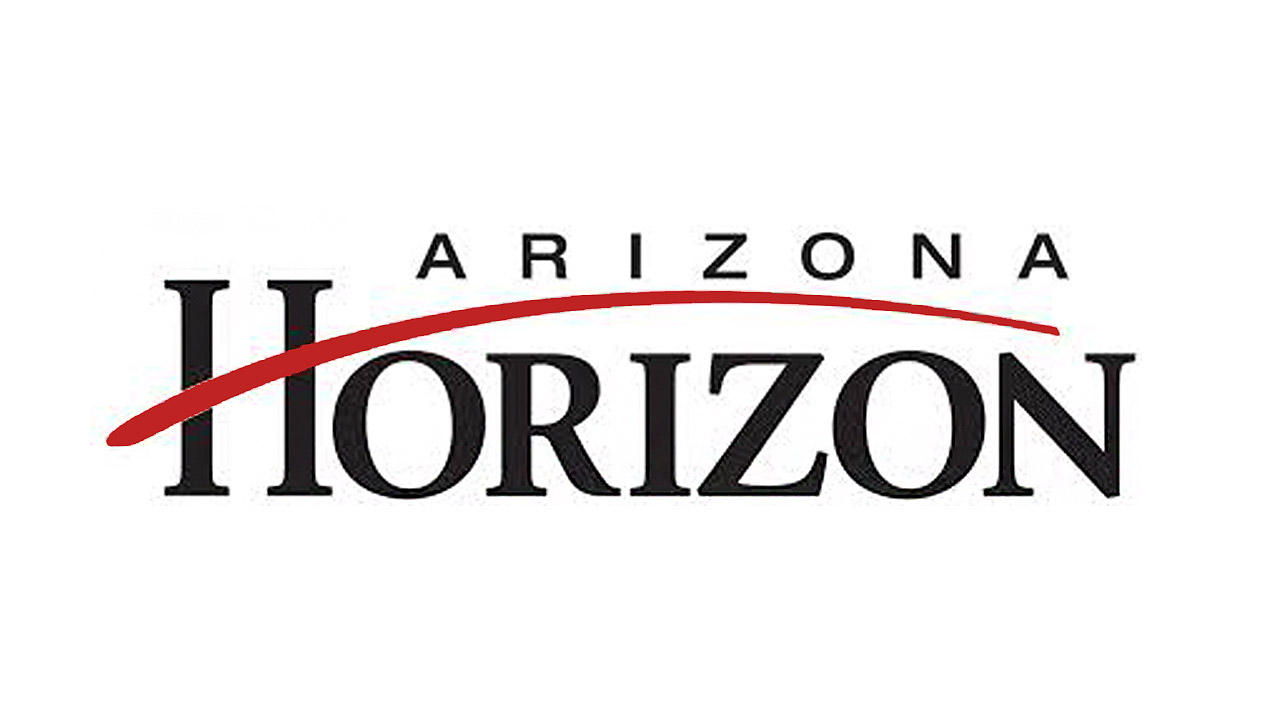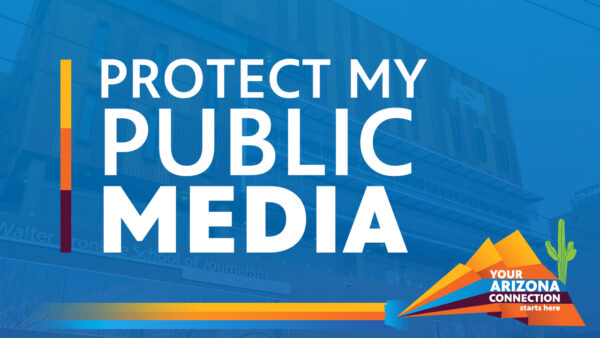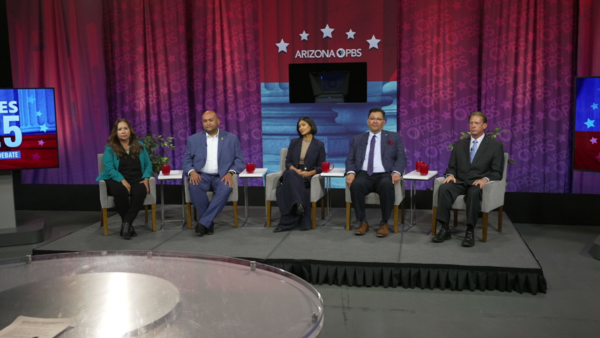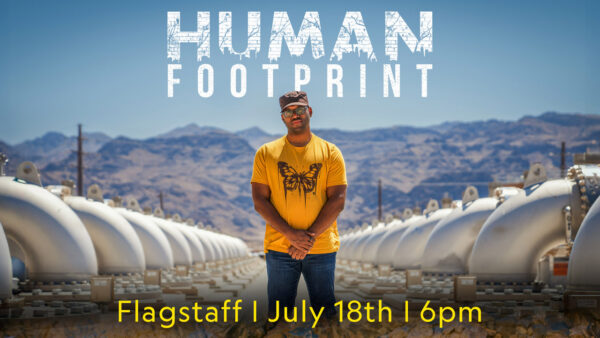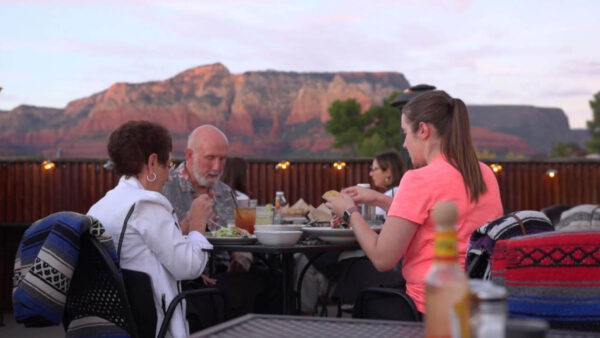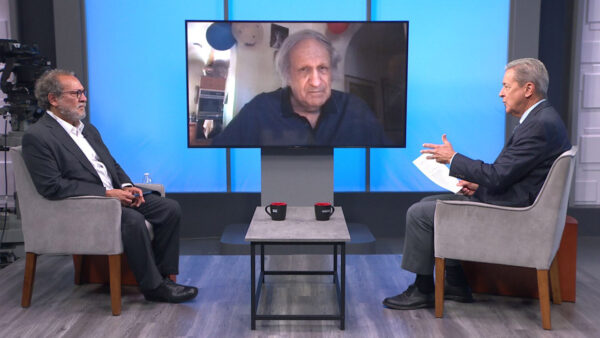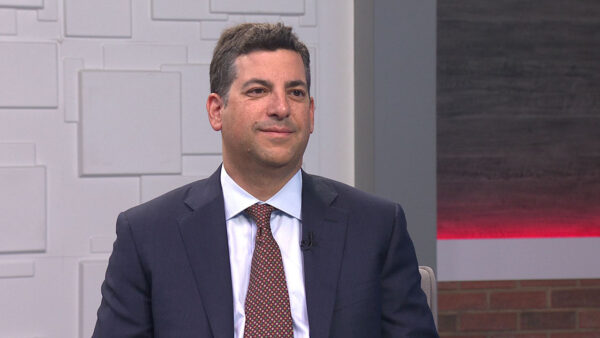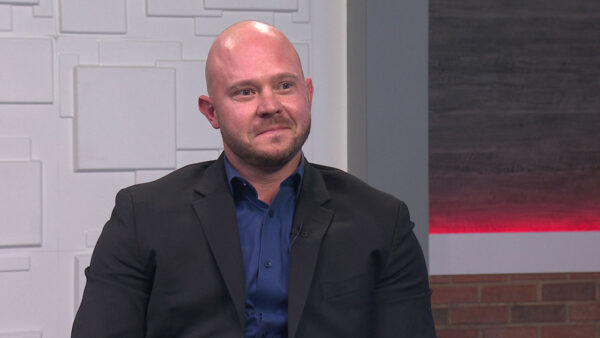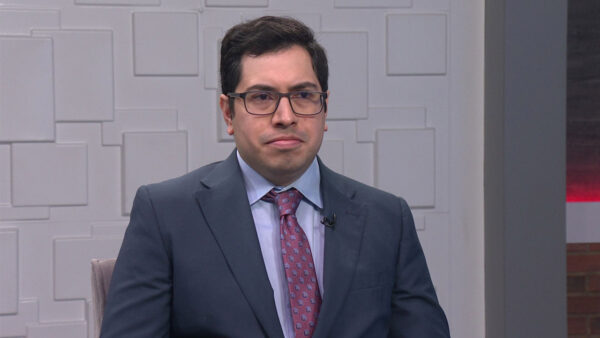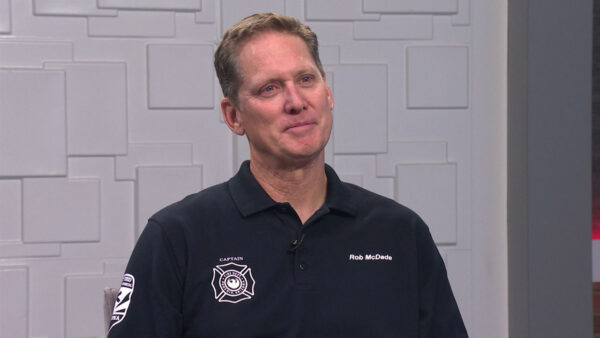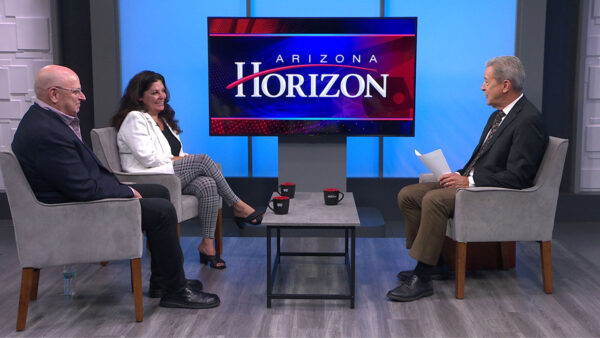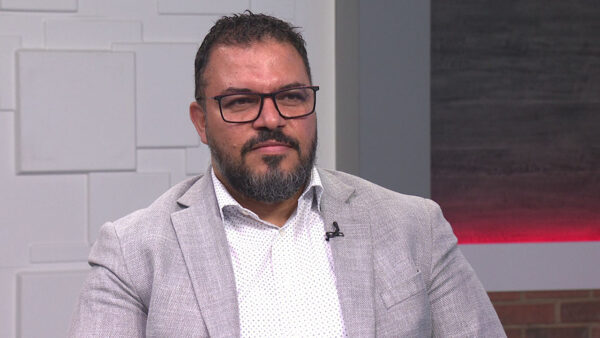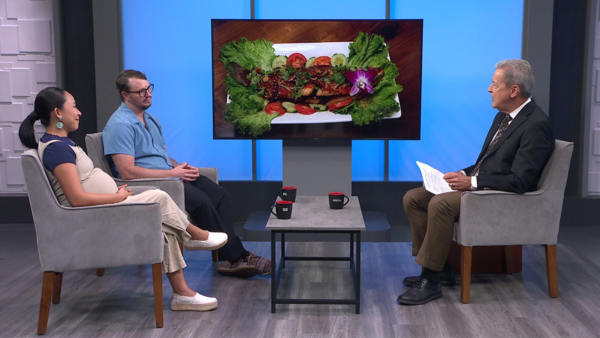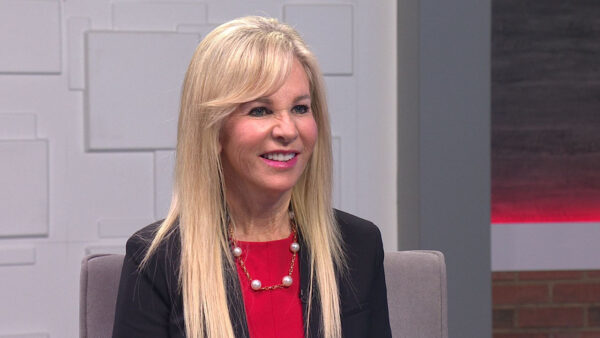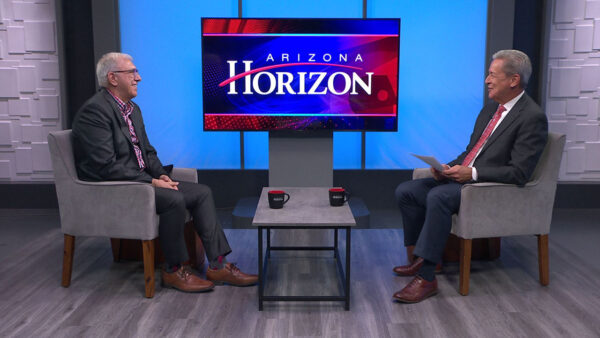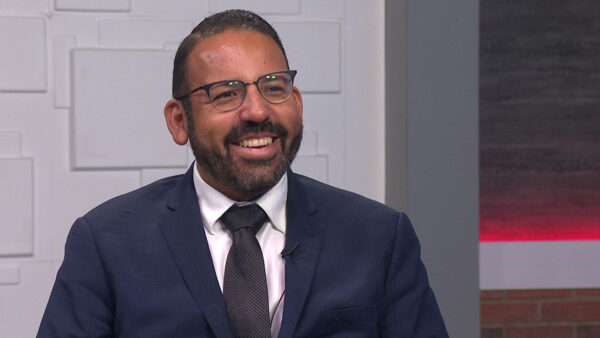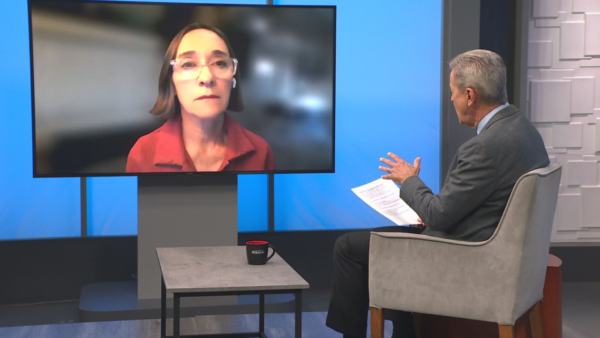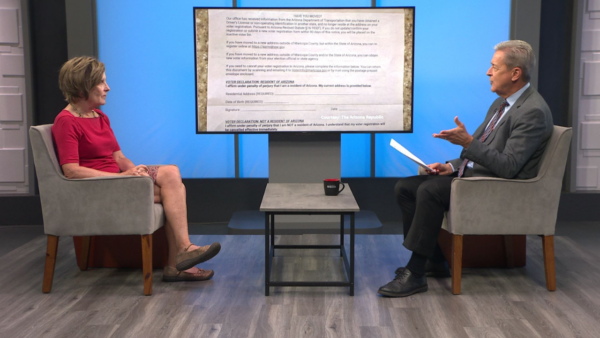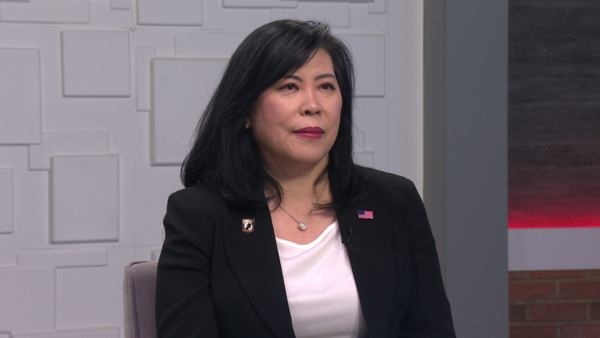Part two of four It’s been more than 20 years since state lawmakers created the Arizona Health Care Cost Containment System, which insures more than one million people in Arizona. How much does the system cost, how does it work and who qualifies for coverage?
>> Michael Grant:
Tonight on "Horizon," a Tempe business owner is celebrating a victory in a fight that could have left him without his property. We look at this eminent domain issue. Plus, everyone wants adequate health insurance to pay their medical bills. Arizona's healthcare cost containment system was designed to cover those who don't. We look at the program 20-plus years after its inception. Those stories next, on "Horizon."
>> Announcer:
"Horizon" is made possible by the friends of channel 8. Members who provide financial support to this Arizona PBS station. Thank you.
>> Michael Grant:
Good evening. I'm Michael Grant. Welcome to "Horizon." A planned shopping center in Tempe is at the center of a contentious property rights debate. Some individual property owners in the development area have refused to sell their property. Part of the large, prime location land is on a former landfill. The city filed to condemn the property, saying it would benefit the public because the developer would clean up the site's environmental issues. In a ruling last week, a Maricopa County judge reversed the condemnation of the property. In a moment, we'll talk more about what happened in court. First, Merry Lucero spoke with an area property owner.
>> Merry Lucero:
The proposed 130-acre marketplace shopping center is at the southwest corner of the Loop 101 and 202 freeways in Tempe. Some areas of the property need environmental remediation. The city has a deal with the property developer, Mira Vista to do the cleanup. They plan big box stores, a movie theater and other shops, but 13 property owner remain. Troy Valentine is one of them.
>> Troy Valentine:
We moved into this building in the summer of '92. So that was previous to the lake and previous to the freeway systems. You know, it was a total industrial area. Nobody was really buying property down here, so -- and it was a perfect building for our needs and plenty of land to expand on.
>> Merry Lucero:
The area was County Island until the late 90s when Tempe proposed annexation with streets and sewer and water services.
>> Troy Valentine:
That got some more people to sign. Then once they were at roughly 49% to 50%, there were people that said, well, if you don't sign up, you are not going to get these items. It had enough people to push it over the 51%, then they -- we were basically in their control. So, they had enough to annex us and at that point, they could start working the redevelopment agreement and shortly after the condemnation proceedings.
>> Merry Lucero:
The build something solid concrete, has low insurance premiums. Valentine was offered compensation.
>> Troy Valentine:
It was very, very little. The appraisals came in a lot lower than I could ever go buy the same piece of property for. The appraisals or the comps done on it were south Chandler, south Phoenix, they were quite a ways away. My wife and I purchased this property because my home is three miles from here. Three miles east of here.
>> Merry Lucero:
Valentine says the property with the environmental hazards belongs to the developer.
>> Troy Valentine:
I have a total clean property. Why should I be kicked off my property? I don't have subsidence and I don't have environmental problems. SBA bank loaned me the money on that fact. And I had to pay for the environmental through -- before getting my loan, they said hey, if it'll prove clean, we'll lend you the money. They lent me the money. So, on those facts, we moved ahead.
>> Merry Lucero:
Bottom line, Valentine wants to stay?
>> Troy Valentine:
Yes, I would love to stay here. My payments are very low. My -- it's built for my needs. It's close to my home. You know, insurance is low. It's everything I want. So, that's my desire as a property owner who owns the property through the Fifth Amendment.
>> Michael Grant:
Tempe mayor Hugh Hallman had originally agreed to appear in that taped story, but was advised not to because the city may appeal the court decision. Here to talk more about this eminent domain case, attorney Doug Zimmerman, who represents two of the private property owners. And attorney Tom Liddy, who represents the Tempe Marketplace Developers and is also former director of the Arizona chapter of the Institute for Justice. Gentlemen, it's good to see both of you. Doug, the city says that there's an environmental problem on at least some portion of this property. I know that property owners dispute that factually, but let me ask you to assume for a moment that there were an environmental problem there, and the developer was going to pay for it, relieving the taxpayers of the burden. Would that change the ruling in this case?
>> Doug Zimmerman:
Michael, it wouldn't change the ruling at all, because what is the fact and what is the situation you asked me about, the contamination issue is an issue that was made up by the city as far as we're concerned, to justify the condemnation. Keep in mind that this urban redevelopment project first started out to be an urban redevelopment under economic reasons and that was changed because of the statute in 2003. This judge heard five days of evidence, and all kinds of exhibits and expert testimony. This judge has determined that the health assessment that was on this property did not indicate a health risk, a risk to humans. You can say there is environmental contamination. We have environmental contamination in our houses in our garages, in our sheds, so I guess every piece of property is subject to condemnation if that's it. Just by saying there is an environmental contamination, doesn't authorize the right to take a person's property.
>> Michael Grant:
But if there had been environmental contamination, would that have been a grounds for the exercise of eminent domain by the City of Tempe?
>> Doug Zimmerman:
In our opinion, it would not be. First of all, with environmental litigation, keep in mind, and I'm sure you are familiar with this, if there is an environmental problem, there are state and federal agencies that deal with that. In this particular case, if there were some kind of environmental degradation, and I'm a property owner like Mr. Valentine who says I'm clean, why should you condemn me, Mr. Valentine has a right to require that other property to clean up. The City of Tempe that deposited the solid waste in the landfill that caused the methane problem. They are the ones that did it. Mr. Valentine has the right to bring that against him.
>> Michael Grant:
Tom, it does seem like a circuitous route for the City of Tempe to seize the property, turn it over to a developer to clean up an environmental problem, so that a shopping center can go up there. I mean, that seems kind of a strange approach to addressing an environmental problem.
>> Tom Liddy:
Well, it's a very difficult issue, and it's -- private property rights are fundamental to this county's founding, our economic success and the framers have it in the state constitution and we've got it in the Arizona constitution that is a stronger protection than the federal constitution. You can't wish away the -- Those were four former landfills filled with refuse. Some of the later stuff was -- the latest one has been closed. We have no idea. We know there is a lot of biological refuse that's decomposing and it's letting off and creating methane gas, which knows no boundaries. It goes away. It would be a wonderful case if they just made up the environmental problems, but according to the EPA, according to the state department of economic quality, according to the City of Tempe, and according to the experts, and now even according to the judge who in his findings found the environmental damage. There is we can't go there is no environmental damage or for your listeners or reviewers out there in Sun City, I dream of Jeannie, boom, it's gone, no more problem. It is there, it is real and now you've got the Court order during the City of Tempe, you've got to use your police powers to clean it up.
>> Michael Grant:
Why isn't that a more direct response to the problem rather than taking the problem for Vest Star to put up targets and Costco's and Burger Kings?
>> Tom Liddy:
How are you going to clean it up who is going to pay for it. In theory, you could say people of the City of Tempe, we're going to raise your taxes, $20, $26 million, whatever it takes. And you take that money and clean it up, plus you might get some money from the federal government, EPA to help you out. The citizens of the taxpayers of Tempe want to do that want to raise tax that is much? Who gets the benefit? The current properties owners get it who sit on the current land. What the City of Tempe has been working for years is a creative public-private partnership with the federal government and the City of Tempe tax players and private sector to get HUD money, federal loans, plus a substantial, between $15 and $20 million investment from the private sector, in order to have remediation all that environmental damage.
>> Michael Grant:
Can you ever have a public purpose like this, Doug in your opinion, where putting together that sort of coalition gets a public purpose done for a lot better bang for the buck for the taxpayers than simply hitting the general fund?
>> Doug Zimmerman:
0Well, one of the issues here is not what's good for the general fund, we're talking about private property rights. Our Arizona legislature has said, you will not condemn in the State of Arizona for any kind of economic development. That was repealed in 2003. You can condemn in Arizona for blight and slum. In this case, they could not condemn for blight because it did not meet the criteria. You can condemn for slum. The slum conditions in this particular situation, they are trying to make relate to environmental issues. They do not relate to that. Let me tell you one thing that was said in the -- the only health assessment of the area in question does not support a plaintiff, that's the city's position. You can say environmental contamination. The issue here is there a threat to human health and safety? Judge Fields listened to the testimony, listened to experts on this subject. They, the city, and the developer never did a risk assessment. They go out there and they'll find some contamination 20 feet below if a little pocket. If they hadn't dug at some point, that contamination 20 feet down would have never been a problem. What the problem is they are creating by taking over these properties, digging things up, and then saying, well this justifies. Same with methane. That's easily taken care of and the judge said that.
>> Michael Grant:
Tom, here is the suspicion. The suspicion is the City of Tempe, which is a landlocked city, and has some economic constraints that other municipalities in the valley as you know don't have, is using this as a cover story for economic development and a fair amount of sales taxes.
>> Tom Liddy:
That's an argument that has been made in some quarters. That might work with the current Supreme Court right now that says if you can show raising sales taxes you can take somebody's land, I personally disagree with that decision, the new London Connecticut decision. I think it's going to be corrected in pretty short order by the U.S. Congress, but the facts of this case are that Judge Fields did in fact find, quote, a threat to life and property and to the firefighters responding to emergency situations. Now, that does not square with the facts as you just heard them. There is a clear --
>> Michael Grant:
If he found that, then, why did he rule that I'm sorry, Tempe you can't do it?
>> Tom Liddy:
Because what he said was, that the City of Tempe has to use its other police powers before it uses eminent domain, laws rules, and regulations before it does that. That would reduce the value of that land down to below zero. What the City of Tempe is trying to do is use the private-public partnership where the current landowners aren't held responsible for all of that and economically devastated. One of the reasons why is I agreed to participate in this, because it's so distinguishable to the Bailey brake shop case where there was no finding of slum. We're tired of developers running roughshod over property owners. Vestar has been working hard with property attorneys give them 140%, in some cases more of the assessed property value. Those are based on there being no environmental damage. That's the way you make the system work with dignity.
>> Michael Grant:
I'm sorry, we're almost out of time, but real quickly I realize you don't represent the City of Tempe, but they've indicated they are taking it up to the Court of Appeals?
>> Tom Liddy:
That's my understanding.
>> Michael Grant:
All right. And I assume you two gentleman will be slugging it out. Doug Zimmerman, good to see you again. Tom Liddy, take care of yourself.
>> Doug Zimmerman:
Thank you.
>> Michael Grant:
Continuing our series on healthcare coverage in our state, the Arizona Healthcare Cost Containment System or AHCCCS is our states medicate program. Medicaid serves 52 million people nationally. AHCCCS contracts with health plans and other program contractors to deliver services to enrolled members. AHCCCS receives federal, state and county funds to operate, as well as funding from Arizona's tobacco tax. Eligibility by income and resource criteria varies by group. We'll talk more about AHCCCS in a moment. First, Merry Lucero profiles one former AHCCCS member now caught in the middle of eligibility.
>> Zosha Welton:
The reason I was on access before is because I had cancer. As soon as I turned 18, I was still living at home. I had a job, not a well-paying job or anything, and they just cancelled it. They didn't tell me I went into the emergency room because I had a urinary tract infection and the stomach flu, and I learned that I don't have AHCCCS, and that was a $1700 bill. You know, I -- I still have that bill. I can't afford to pay that.
>> Merry Lucero:
Kidney problems and another hospital visit put her medical bills at nearly $4,000, Welton makes $10 an hour, too much now to qualify for AHCCCS, but not enough for her company's healthcare plan.
>> Zosha Welton:
I wish AHCCCS would recognize that and recognize, you know, I do make $10 an hour, but it's not -- it barely covers everything I have to pay for now. I can't afford to pay a co-pay or a percentage of what Cigna would want me to pay if I wound up in the emergency room for two weeks. Cigna is a great healthcare plan if I could afford it, I would love to be on that, but I just can't. It's unrealistic.
>> Merry Lucero:
As a collections agent, Welton knows how overwhelming unpaid bills can be.
>> Zosha Welton:
It's hard, you know, any time if I do want to go finance a vehicle or something, I can't, because of my credit is going to be shot because of these bills. And it looks like I haven't even attempted to pay it. I tried. They won't work with me. They won't set up a payment plan because it's been so long since that debt has occurred.
>> Merry Lucero:
Welton is getting married soon, but even with that, not much will change.
>> Zosha Welton:
Once I do get married, my access to AHCCCS will be gone because our joint income would be way too much.
>> Merry Lucero:
For now, Welton slips between the gap of too much income to qualify for AHCCCS, too little to pay for her own health insurance.
>> Zosha Welton:
With my career, I'd love to stay there for a while, because I love the company. I'm -- healthcare, if I made more money, I would love to be able to pay for it, but right now that doesn't seem possible, just because the more money I get, it seems the more bills I have, and then it gets really frustrating.
>> Michael Grant:
Joining me now with more on the AHCCCS system, Tony Rogers, director of the Arizona Healthcare Cost Containment System. And Dr. Monte DuVal who is the original creator of the AHCCCS system. Thanks for joining us. Monte, there is a 6, 7 year gestation period for AHCCCS back in the early '70s to 80 years ago?
>> Dr. Monte DuVal:
There was indeed, Mike. AHCCCS passed the federal government in 1965. It took nine years to wake up and get to our attention in Arizona. What we did here in 1974 specifically was the leadership in both the house and senate, Burton Barr and Sandra Day O'Connor decided it was time to take a look at it. They put in place a large committee, which I was privileged to chair, and they brought in a bill and we got Medicaid in Arizona for the first time, except that the bill was flawed and ultimately challenged and discarded. So it wasn't until '78 that Governor Babbitt was the Governor and he said would you try again, and I said sure. And I laid down the principles on which I thought it would work. Basically there were three principles and one was that the people who were covered should be brought into the mainstream of medical care and not treated differently, and number two, if the physicians and sponsoring agency in this case, it turns out AHCCCS should sit down and agree at what capitation level they would be able to do this -- to take care of their particular clientele to be eligible.
>> Michael Grant:
To what extent was it driven by the fact that the county healthcare system was simply starting to grown and nearly collapse under financial weight of carrying a non-Medicaid program?
>> Dr. Monte DuVal:
That was a major factor. It may even have been the major factor, because as the number of persons eligible for Medicaid in the state increased, at that time not being available in the State, the county's bills were running higher. As a consequence of that, people began to realize, look, we could meet these bills if we had a two-thirds match, which we get from the federal government under the Medicaid program. That gave a great deal of impetus to getting the program off the ground.
>> Michael Grant:
Tony, we now -- I'm somewhere in the ballpark, am I not? Roughly a fifth of the State's population is on AHCCCS?
>> Tony Rogers:
That's correct. That's correct. I think when the architect was designing AHCCCS, there was always the anticipation that AHCCCS would fill the gap in terms of healthcare coverage for the State of Arizona. In fact, the statute was written that AHCCCS could actually not only serve the Medicaid, but go beyond that to serve other public and political subdivisions. What has happened with the passing sage of proposition 204 back in 2001, was that AHCCCS increased its federal income limit and that opened the door for the working poor to have healthcare coverage. That's what has really created the impetus of the growth over last few years.
>> Michael Grant:
Tony I realize there are a ton of different programs and a ton of different criteria, but in general, who qualifies for AHCCCS?
>> Tony Rogers:
Well, if you look at it -- let's break it down into a couple of groups. One, is families. If you are a family and you are under 100% of poverty or you are on TANIF.
>> Michael Grant:
That used to be AFDC?
>> Tony Rogers:
That's correct. You will qualify. Then you have children, a lot of children, qualify for AHCCCS either because their parents income is low and these are citizen children, and then we have the KidsCare program, which allows individuals above 100% to qualify and pay a premium. They pay a premium each month to qualify to get the same benefits they would get in Medicaid. Then we have the senior group or the blind and disabled who have long term care needs or acute care needs who are also qualified for AHCCCS as well.
>> Michael Grant:
The long-term care aspect of the AHCCCS program in Arizona is pretty unique nationwide, is it not?
>> Tony Rogers:
That's correct.
>> Michael Grant:
Does it function in the same sort of captivated model as the main AHCCCS program?
>> Tony Rogers:
Yes, it does. By placing at-risk program contractors or health plans to manage the care, that incises them to actually use community based or home services versus putting people in nursing homes or institutions and that has really positioned Arizona well, if there is one part of the model that's constantly talked about it's the fact that such a high percentage of our members are actually served in their home or in their community, and are not in nursing homes.
>> Michael Grant:
Monte, I recall some of the rough and tumble back in the '70s and those kinds of things, but there was a strong believe that, yes, the State should move, obviously, if I recall correctly, it was the last state to join the Medicaid system, but it should do so in a different delivery model and that was HMOs and that kind of delivery network; correct?
>> Dr. Monte DuVal:
Yes, that is correct. As a matter of fact, Arizona today is one of the top -- certainly the top five, maybe the top three in terms of the degree of penetration of that kind of managed care in the state. Those were very important at that time. I would say in fairness that to be left out, so to speak, when the rest of the country was moving ahead, was also a factor that we didn't mention a few moments ago, but a lot of things came together at exactly the right time to start Medicaid in the State.
>> Michael Grant:
One of the criticisms of an HMO model is, you know, you just don't get to know your doc the way you used to know your doc and those guys don't make house calls. Is that a legitimate criticism of the HMOs, PPOs all of the letter things?
>> Dr. Monte DuVal:
Well, the PPO not quite the same, because you are much more apt to hang into a single physician or the physician of your choice. And with an HMO, most of them today, they still have what you might call portal of entry medicine so you see the same person or same little group of physicians before you get referred on to some specialty, so-called.
>> Michael Grant:
The so-called gatekeeper?
>> Dr. Monte DuVal:
You are right. You give up something. But everything is a tradeoff. There are people who want convenience. They want to be able to call their physician, et cetera, et cetera, on the other hand, they don't want to pay quite the bills that are being charged today in medicine as a consequence of that, it's essential that you say we'll shave it off here and shave it off there and set it up this way. That's one of the things that gave HMOs a start.
>> Michael Grant:
AHCCCS generally has received fairly positive and by that I think I'm -- received praise on quality of service delivered to the Medicaid population, has it not?
>> Tony Rogers:
It has. That's due to the staff of AHCCCS. What AHCCCS staff has learned over the years is how to manage managed care. So the health plans that AHCCCS contracts with, AHCCCS as an organization, is able to look into those health plans and ensure that people have access to that your physicians. Getting quality of care. There is a strong accountability. That's what helps AHCCCS drive quality and improvements in services. That is what you don't see in other states in terms of fee-for-service.
>> Michael Grant:
In fact, that is at least one of the theoretical and perhaps potentials in reality of the concept is that the provider will have a vested interest in getting the right care to the person, which will reduce the overall cost of caring for that person.
>> Dr. Monte DuVal:
Yes, Mike, that is fair. You may remember I mentioned one of the principles on which we created AHCCCS. It was, of course, in effect to ask the physician and the hospitals to share the risk. That's ultimately what happens in a program like AHCCCS. Tony is correct in using the term "managed care" because it is captivated and there is a fixed budget. You know what you've got at the beginning of the year for the most part. There are certain changes, but when you are working in that kind of a setup, the physician is at risk for the decision that he or she is making, as well as the patient, as well as the sponsoring agency.
>> Michael Grant:
We touched on this last night, but one of the original concepts of AHCCCS was also a healthcare group where you would bring it out to a broader market. That has not been as successful or as --
>> Tony Rogers:
I would disagree. I think healthcare group has been very successful. It's grown over 40% in the last year. The issue, of course, is getting the word out to people. It offers a cafeteria plan of benefits to small businesses. Basically choice as well as premiums that are budgeted at different income levels. So, I would disagree. I think it's been a little delayed in getting started but now it's really taking off.
>> Michael Grant:
All right, Tony Rogers, thank you for joining us. Monte DuVal, always a pleasure. Thank you very much for joining us on this Tuesday edition of "Horizon." Hope you have a tremendous evening. I'm Michael Grant. Have a good one. Good night.
